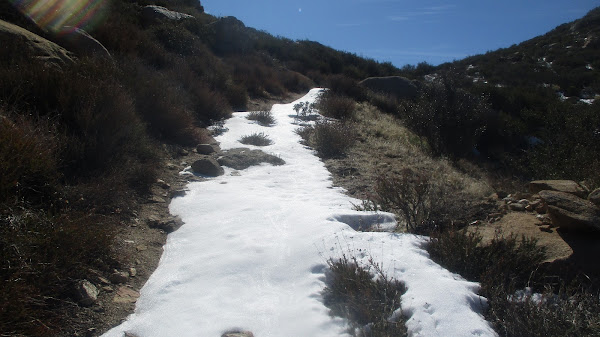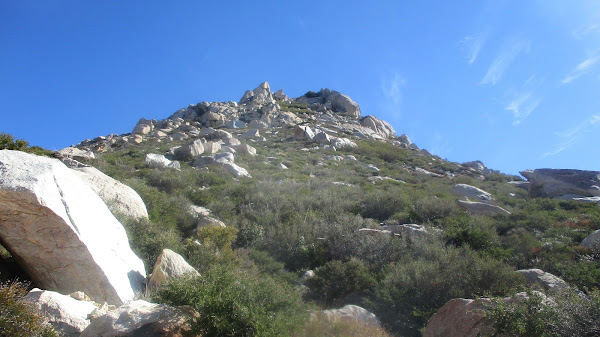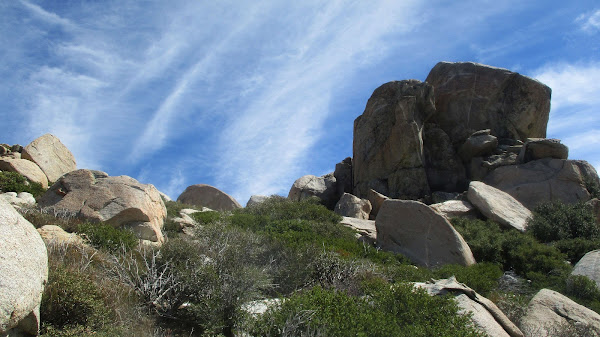Distance: 7.7 miles round trip on trail
Summit Elevation: 5804'
Prominence: 644'
Elevation Gain: 3338'
Elevation Gain (in Empire State Buildings): 2.7
Round trip time: 5 hours 20 minutes
Recommended water: 72 oz.
Parking/Fees: $35 National Parks Fee (one car for one week)
Difficulty: Strenuous
Corkscrew Peak (DPS #58) in the northern part of Death Valley had been on my bucket list a long time. It is not the highest in the Grapevine Mountains, but it stands out based on location and was clearly visible from Furnace Creek more than 25 miles away. Leisa and I drove up Daylight Pass Road to a turnout where the start of a use trail was visible. We were expecting another nice day like the day before, but instead the day was overcast and cool. The forecast called for high winds, and they became an added obstacle.
We followed the faint use trail into a wash, then up a rise that didn't look like it connected to any ridges. We followed it anyway and had to drop off into the wider wash as expected. The trail improved the further we went and it was easy to follow all the way up. Several cairns marked the spot to leave the wash and gain the long northeast ridge. The Desert Peaks Section lists Corkscrew as class 2, but we found only one class 2 move to climb out of the wash. The rest of the hike was steep class 1.
When we gained the ridge, we were blasted with a steady 20-25 mph wind. It was a cool day and the wind made it borderline cold. When we reached the first major rock outcrops, we took a break behind the rocks. There were very few places to get respite and we had to soldier on as the wind hammered us. Corkscrew has two major cliff bands protecting the summit. From most angles, it looked like the only way up was technical. However, the trail cut through the first cliff band of black volcanic rock with ease. Above the first band, there was a short flatish section while the second band loomed above. As we approached, it was clear the trail would split the second cliff band and not require anything technical. The top of the second band ended at "Keyhole Rock", a large oval gap in the wall. From there, it was only a couple of hundred feet to the summit.
An ammo box with a hardback book served as the register. After signing in, I was delighted with the stunning views. Photos didn't quite capture the depth of the color visible in the rocks. There were sweeping views back down to the Death Valley. We spent a few minutes enjoying the summit, then decided to descend back to the Keyhole to find shelter from the wind and eat lunch. I lingered an extra minute and recorded parts of the descent on video. After a nice break, we continued down. Corkscrew gave up gain faster than expected. It was steep enough to slow us down, but didn't require the care I thought would be necessary. We made great time down, only stopping once along the ridge. After returning to the truck, we drove on to Beatty, NV to fill up on gas. Regular unleaded was a bargain at $6.05/gallon compared to $8.75/gallon back in Furnace Creek. You don't want to buy gas in Death Valley if it can be avoided. Corkscrew exceeded expectations. Highly recommended if you visit Death Valley. note: will add video later



















































